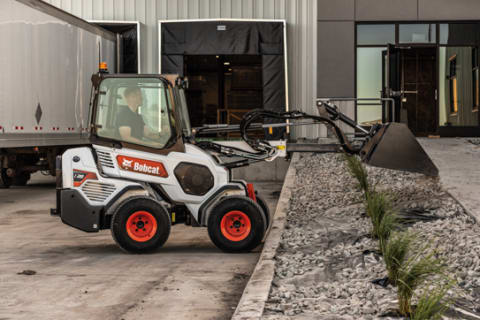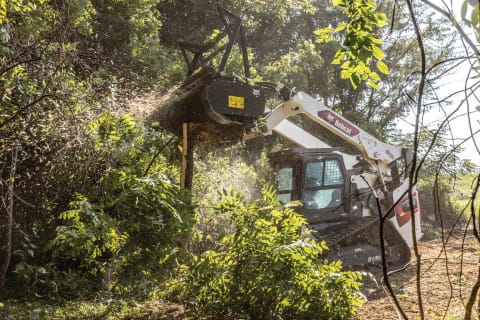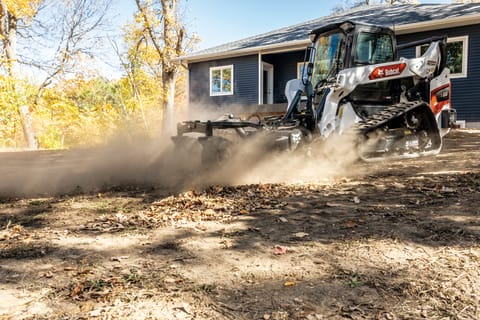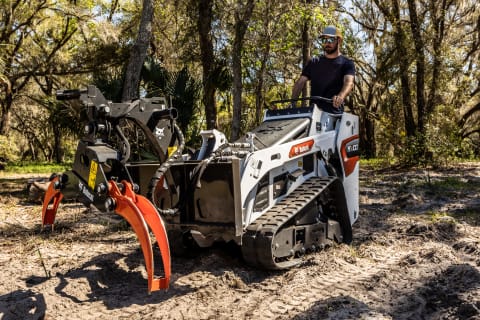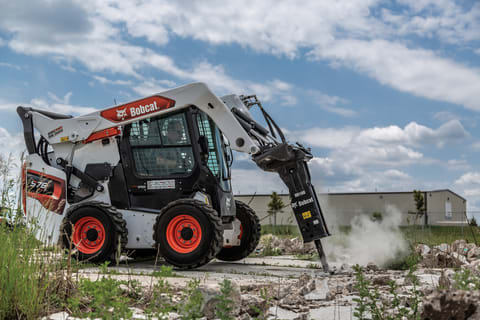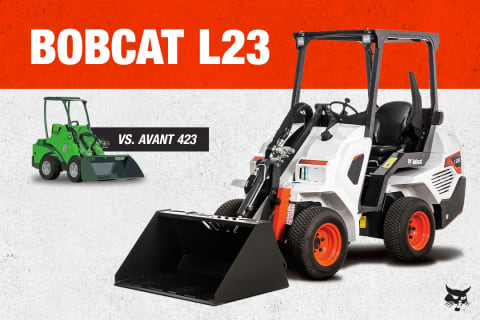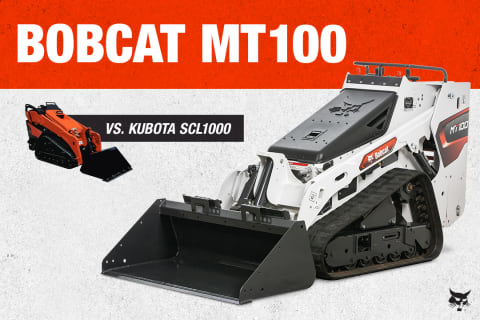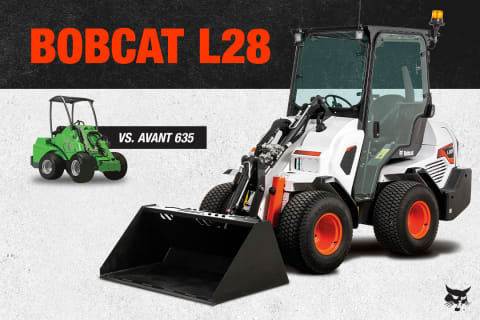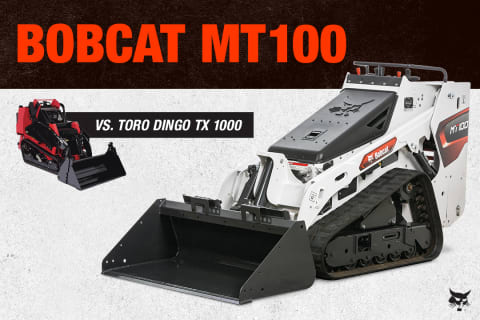- Home
- Buying Resources
- Loaders
- Avoid Costly Downtime with a Preventive Maintenance Checklist
Build Your Loader, Get a Free Price Quote
Customize your loader. Select the model, choose options, and submit to your local dealer for a free price quote.
Build & QuoteAvoid Costly Downtime With a Preventive Maintenance Checklist
Published on February 5, 2015
We all know the revenue needle stops moving during unexpected downtime. That’s why preventive maintenance is so important to your business. Although wear issues develop with all equipment over time, you must answer one simple question about your maintenance plan: Do you want to be proactive or reactive?
If you’ve had a machine break down or lost valuable work time that could have been avoided by following your manufacturer’s recommended maintenance schedule, then you know the frustration of losing revenue.
Your ability to protect your assets and prolong their useful life is largely dependent on creating a consistent maintenance plan that covers three key areas:
- Properly assess your business needs with machine capabilities
- Anticipate wear and follow recommended maintenance intervals
- Understand today’s maintenance needs
Assess Capabilities
The first step toward a proactive approach to maintenance is assessing how you will use a compact excavator or a loader. For excavators: How deep will you dig and in what ground conditions? For loaders: How much weight will you routinely lift? What will you load into? What size restrictions are on the jobsite?
If your equipment is allocated to jobs it’s not designed to handle, you are more likely to have a machine that may need frequent repairs. It’s important to follow manufacturers’ rated capacity guidelines to purchase the correct size of machine.
Anticipate Wear
Next, you need to get familiar with the maintenance sections of your machine’s Operation and Maintenance Manual. You’ll find that maintenance intervals commonly start with basic procedures at 8 to 10 hours, followed by most others at 50, 100, 250, 500 and 1,000 hours.
Routine daily service intervals for fluids, lubricants and filters should be followed during normal working conditions and temperatures – as temperatures drop, machine service requirements can change. In cold weather, items that should be adjusted and monitored to meet winter weather include fuel, tire pressure, block heaters, battery, oil, grease and cold-climate comfort features such as heating and defrosting systems.
Tires on skid-steer loaders will usually last around 600 to 800 hours if working on dirt most of the time at proper inflation levels. Rubber tracks on mini excavators and compact track loaders can reach 1,200 to 1,600 hours if they’re operated properly, kept clean and tensioned when required. Tire and track life may be reduced if operating on improved surfaces.
Visual checks of attachment components such as cutting edges, bucket teeth and hoses can help determine if wear is developing or damage has occurred.
Understand Maintenance
Today’s machines are equipped with various levels of emissions-compliant engines that require a general understanding of interim Tier 4 and Tier 4 technologies and their needs. New machines have different lubricant requirements and other components such as high-pressure common-rail fuel injection systems, diesel oxidation catalysts and diesel particulate filters affecting maintenance.
More sophisticated diagnostics systems have been developed to provide faster analysis of service-related items. Many compact machines also have on-board diagnostic storage of critical information.
It’s been said that an ounce of prevention is worth a pound of cure. So, the more effort you put into evaluating machine capabilities, following recommended maintenance intervals, anticipating wear rates and grasping new maintenance needs up front, the more uptime you’ll experience.
Explore More Loader Resources
View All Articles- Small Articulated Loaders Productivity for Grounds Maintenance
Small Articulated Loaders Productivity for Grounds Maintenance
Learn about how versatile and powerful small articulated loaders increase productivity and their advantages for ground-maintenance and landscaping professions. - How Compact Loaders are Beneficial for Forestry Work
How Compact Loaders are Beneficial for Forestry Work
Learn how Bobcat compact track loaders and skid-steer loaders provide versatility with attachments and machine power to increase your productivity for forestry work. - Landscaping Attachments for Compact Loaders
Landscaping Attachments for Compact Loaders
Explore the top landscaping attachments for your compact loaders, like compact track loaders for versatile productivity and power on the job. - Top Attachments for Mini Track Loaders
Top Attachments for Mini Track Loaders
Discover the top attachments from the 24 available for the Bobcat Mini Track Loaders for job-specific landscaping, grounds maintenance and forestry challenges. - Bobcat Attachments for Concrete Work with Compact Loaders
Bobcat Attachments for Concrete Work with Compact Loaders
Learn why Bobcat loaders are the machines of choice for concrete contractors with the productivity increase of Bobcat attachments specifically for concrete work. - How to Choose Compact Track Loader Tracks
How to Choose Compact Track Loader Tracks
The right compact track loader tracks can improve your machine’s performance, minimize ground disturbance and extend your working season in wetter months. - Bobcat L23 vs. Avant 423 Small Articulated Loaders
Bobcat L23 vs. Avant 423 Small Articulated Loaders
When choosing a small articulated loader, it can be overwhelming from the options. Explore this comparison of two popular options: the Bobcat L23 and Avant 423. - Bobcat MT100 vs Kubota SCL1000
Bobcat MT100 vs Kubota SCL1000
Every feature and specification matters, to obtain maximum production and output from a mini track loader. Compare the Bobcat MT100 against the Kubota SCL 1000. - Bobcat L28 vs. Avant 635 Small Articulated Loader
Bobcat L28 vs. Avant 635 Small Articulated Loader
Small articulated loaders provide impressive lifting capabilities. When looking at the Bobcat L28 compared to the Avant 635, here are some factors to consider. - Bobcat MT100 vs. Toro Dingo TX 1000
Bobcat MT100 vs. Toro Dingo TX 1000
When choosing a mini track loader, it is important to examine key features and benefits. Explore how the Bobcat MT100 stacks up against the Toro Dingo TX 1000.
